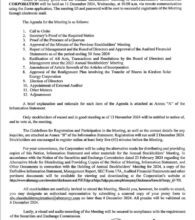Elements of a smart onboarding process

Is there a connection between employee retention and the onboarding process? In other words, how do we determine the success of onboarding with employee motivation and their long-term commitment to the organization? — Light Bulb.
Your questions are better answered in a formal study by management academics and researchers covering time-tested best practices. However, with or without research, it’s easy to understand that an onboarding process must be formal, systematic, and well-planned by human resources (HR).
In addition, a formal onboarding system for new hires must include a follow-up session and a feedback mechanism with the help of a senpai-kohai system (explained below) to determine how effective it is in its objective of ensuring that new employees are constantly motivated to give their best in the long term.
So, what exactly is an ideal onboarding process for all organizations, regardless of their business, culture, and size? How can an onboarding (the old name is “employee orientation”) process increase employee engagement, invoke a sense of pride in new hires, and turn, improve the retention rate?
While the style differs from one organization to another, the onboarding system must be similar in coverage. One basic difference between a big organization and a small one is the amount spent in making the introduction worth the effort.
For example, some major organizations give away lots of corporate swag to every new employee, while small companies would be happy to offer coffee mugs, umbrellas, or desk calendars to their new hires.
While some HR managers consider the onboarding process as a major consideration in employee retention, others would simply treat it as trivial, or even too corny to bother with, until it is too late.
PROCESSTo make the onboarding process interesting for all stakeholders, it must be highly interactive, starting with the formal honorific appointment of a senpai or a senior member of the department who has the clout, experience, hierarchy, or length of service than the kohai or junior hires.
The senpai is the alter ego of HR and department heads.
The job of a senpai who is not the direct boss of a kohai is to offer friendship and guidance outside of the boss-subordinate work relations. To avoid any untoward issues, a senpai must be someone of the same gender as the kohai. The job of a senpai starts as soon as HR has completed the formal orientation process that includes the following basic elements:
One, a welcome ceremony by HR. This includes a pep talk by the chief executive officer and department heads to create the impression that the new hires are important to the organization. This is best done if HR can gather at least 10 new employees in the training room.
Otherwise, a one-on-one welcoming party may be conducted if there are no other new hires to be inducted in the following weeks. Part of the welcome program is a video presentation about the company, its history, its products, its industry, and the profile of its key management officials.
In addition, the program must include the corporate mission, vision, cultural values, and unwritten norms and behaviors, as well as the philosophy that guides all employees.
Two, organize a brief tour of the company facilities. The new workers need to be toured around the office building and its facilities, including the common areas like the medical clinic, locker rooms, cafeteria, and rest and recreational areas. This part makes them feel “at home.”
It is also another opportunity for the new hires to meet other key employees in those areas.
Three, require the completion of paperwork. The important documents to be completed include the distribution and acknowledgment receipt of the company’s Code of Conduct and the employment contract. Each welcome packet may include the annual report and some copies of the employee newsletter.
Other important documents to include in the packet are the worker’s enrollment in a health maintenance organization and enrollment in the ATM payroll system to avoid delay in the release of the first salary and other benefits. The new hire must also submit a birth certificate, marriage contract (if applicable), social security identification, and other requirements.
To avoid any missed signing opportunity, it is ideal for HR to have a checklist of what documents to accomplish with the new hires, so they become ready for the actual work itself and not allow such trivial issues to become a source of their early dissatisfaction.
OBJECTIVESThe objective of onboarding is to ensure an easy and positive assimilation process, giving the new hires every opportunity to affirm their commitment to the company, reduce their anxiety, understand expectations, and create a friendly work environment for everyone.
The onboarding is the accumulation process that assists the new hires, HR, and their department in adjusting to their jobs and instilling a long-term view beneficial to everyone. When done properly, it encourages pride, loyalty, and creates a family belongingness unique to that organization.
Have a free consultation with Rey Elbo on your people management issues. Write your concerns to elbonomics@gmail.com, Facebook, LinkedIn, X or via https://reyelbo.com.
Anonymity is guaranteed.




